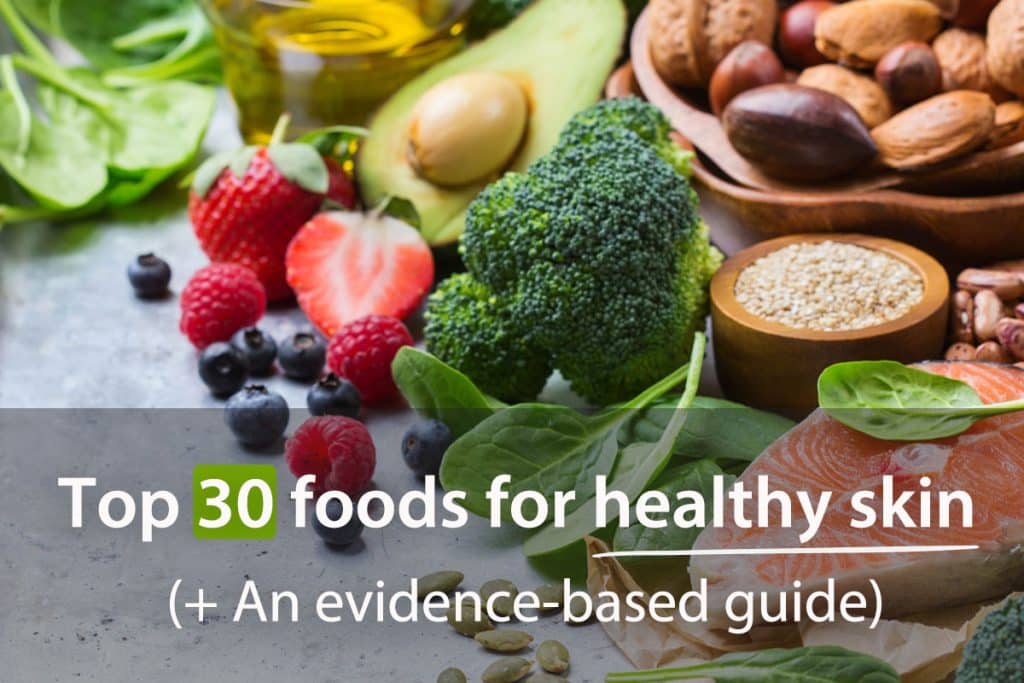Are you suffering from chronic skin issues?
Or maybe you’re just tired of dealing with a dull and lackluster complexion.
Perhaps you’ve noticed that the crow-feet and wrinkles are becoming more pronounced?
Sure, you can run to the cosmetics shop to spend a hefty portion of your monthly income. But wouldn’t it be more sensible to review your diet first?
The simple answer to your skin dilemma may be in your plate. [SO cliché, I know.]
Backed by scientific research, this article lists various foods for healthy skin that will nourish your skin cells from within.
1. Liver
Shocked that the liver is number one on the list of healthy foods for the skin?
I hear you! After all, people generally believe that the liver is where the body stores toxins. But the truth is that the liver neutralizes toxins. It does not store those toxins.
So why should you eat liver if you want a healthy skin?
Simple: it is packed with vitamin A and various B-complex vitamins (such as riboflavin, niacin, vitamin B6, folate, vitamin B12, and pantothenic acid). The liver is also a good source of the mineral zinc.
And guess what? The body’s innate detox machinery needs these nutrients to perform optimally!
I’ll cover the role of these nutrients later in this article. But for now, let’s have a look at the function of vitamin B6 in skin health.
Also known as pyridoxine, vitamin B6 is involved in:
• Cell replication. Hence, an adequate supply of vitamin B6 will ensure that your body can replace damaged skin cells.
• The production of hemoglobin, the protein that allows red blood cells to transport oxygen. Therefore, getting enough dietary vitamin B6 is necessary for your skin cells to get enough oxygen.
2. Wild fish
Why ‘wild’ fish? Well, because their farmed ‘cousins’ are often fed lots of chemicals that can damage your skin.
Since wild fish live in their natural habitat, they are higher in omega-3 fatty acids. Especially wild cold-water fish such as salmon, Atlantic mackerel, sardines, and rainbow trout.
Why are wild fish considered as healthy foods for the skin?
For your skin to look young and remain healthy, it needs a strong protective barrier. This barrier will help shield your skin against excessive moisture loss. It will also ‘deny’ entry to harmful toxins and pathogens. This is what we call ‘selective permeability.’
That’s where omega-3 fatty acids come in: they keep the skin’s barrier healthy and selectively permeable.
Moreover, studies suggest that omega-3s can protect your skin from the sun’s radiation. This helps prevent premature skin ageing.
Omega-3s also maintain the skin’s elasticity by protecting collagen from wear-and-tear. Collagen is the protein that gives the skin its structure. It is the skin’s scaffolding and, if the collagen is healthy, your skin will remain firm and wrinkles and fine lines will be less visible.
Besides omega-3, fish are terrific sources of niacin, zinc and selenium.
3. Salmon
Besides being rich in omega-3s, salmon is also a great source of astaxanthin.
Astaxanthin is a powerful antioxidant that has a reddish-orange pigment. It is produced by certain species of marine algae consumed by shrimps and krill. This skin-friendly pigment is passed on to salmon when they eat these crustaceans.
One extra reason to add salmon to your grocery list
Did you know that astaxanthin is nicknamed the ‘beauty from within’ antioxidant?
That’s because research indicates that astaxanthin can:
• Reduce the skin’s vulnerability to damage caused by UV light.
• Decrease the production of skin enzymes that induce sagging and wrinkling.
• Prevent the growth of cancer cells at any stage of development.
Important note: Select wild salmon if possible since their farmed cousins are often fed colored pellets to change their color from dull grey to orange-red.
Do you think salmon is boring? Get out of your rut with this list of 31 outrageously yummy salmon recipes!
4. Atlantic mackerel
I promise: this is the last fish on this list of healthy foods for the skin.
But why does the Atlantic mackerel deserve a special place in this article? Well, a 3-oz (86g) serving of Atlantic mackerel provides 7.40µg of vitamin B12.
And most of us don’t get enough of this vitamin which plays an active role in:
• Cell reproduction. If your skin cells can’t replicate properly, your skin cells will age faster.
• Reducing skin inflammation and blemishes.
Not a fan of this fish? Get all the vitamin B12 you need from meat, fish, poultry, and eggs.
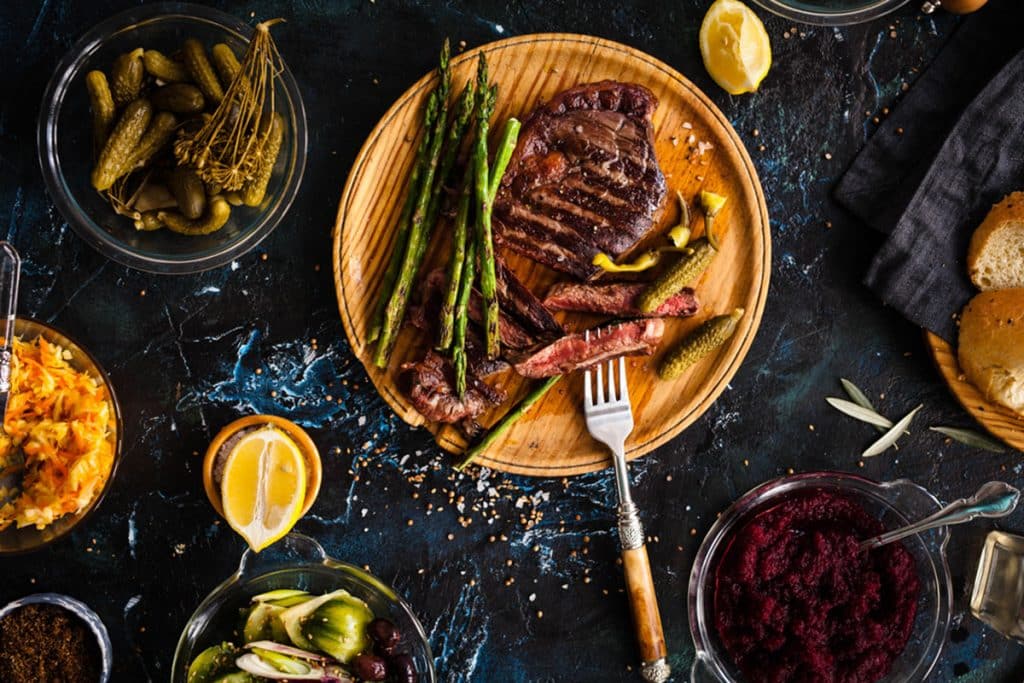
5. Grass-fed beef
As mentioned earlier, there’s a fatty barrier that protects our skin against water losses and inflammation.
Hence, to maintain this barrier, it is crucial for our body to be able to utilize fats effectively. And to do so it needs niacin, a B-complex vitamin.
Niacin also ‘allows’ about 200 enzymes function normally. These enzymes enable the body to use other vitamins that are essential for healthy skin.
Bonus: Grass-fed beef is also a great source of selenium, zinc, omega-3, and vitamin K2.
6. Free-range chicken
Like all animal products, chicken is an impressive source of the mineral zinc.
Fun fact: Did you know that your skin alone contains 6% of all the zinc in your body?
And here’s why:
• Our body needs zinc to create new, healthy skin cells and get rid of damaged ones. Therefore, zinc deficiency can lead to clogged pores (since the dead skin cells cannot slough off) and acne.
• Zinc keeps collagen strong and supple, thus helping to delay the appearance of wrinkles.
• Zinc optimizes the walls of our cells. In doing so, it helps keep toxins and harmful microbes at bay.
• Thanks to its anti-inflammatory and antioxidant properties, zinc can protect skin cells against UV radiation.
• Zinc is also involved in hormonal balance which, in turn, impacts our skin’s health.
7. Pastured eggs
Unjustly demonized for their cholesterol content, eggs are, in fact, one of the best foods for healthy skin.
If only the media would mention that cholesterol is what gives our cells structure and fluidity. Or that by age 40, cholesterol levels in our skin decreases by about 40%!!!
To better understand the role of cholesterol in skin health, it can help to picture the skin’s outer layer as being made of bricks and mortar. And guess what? Cholesterol is an essential constituent of that ‘mortar’!
So, what do you think would happen if you do everything to restrict your intake of dietary cholesterol? Or if you take cholesterol-lowering drugs?
Unfortunately, the ‘mortar’ will get thin and weak, leaving you with a run-down ‘brick wall’, that is a dry, wrinkled skin.
Moreover, since our skin is made of protein, a low-protein diet could increase skin fragility. And guess what? Eggs are a source of high quality protein!
Another advantage of eggs is that, it is one of the rare foods that contain vitamin D. This vitamin, also present in fatty fish, helps to optimize the skin’s immune system. Vitamin D also helps the skin repair itself while offering protection against stressors that can age the skin.
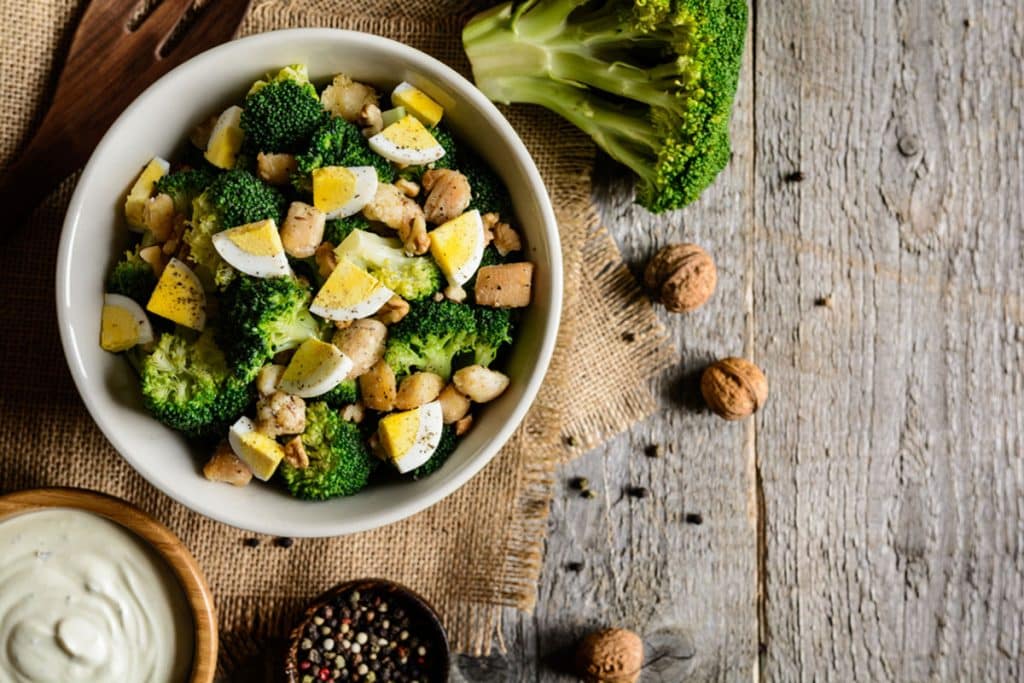
8. Seafood
Seafood like clams and oysters pack a punch when it comes to the minerals selenium and zinc.
Zinc is involved in the healthy growth of skin cells.
And our skin indirectly uses selenium to protect itself against free radical damage. This, in turn, delays skin ageing by preventing skin cells from hardening. Moreover, selenium also helps keep the skin elastic.
9. Coconut oil
What’s the biggest culprit behind unhealthy skin? Or rapid skin ageing?
It’s inflammation!
Thanks to its anti-inflammatory properties, virgin coconut oil can help tone down inflammation in the skin. This protects our skin against premature ageing.
Moreover, coconut oil is also a potent anti-microbial that can kill microbes which favor acne development.
That’s not all: lab research also suggests that consuming coconut oil could boost the skin’s antioxidant status. Hence, this unfortunately regularly bad-mouthed healthy fat could delay the appearance of crow’s feet, skin sagging and wrinkling.
10. Butter
No, that’s not a typo. Thanks to the vitamin K2 it contains, butter is definitely one of the foods for healthy skin.
But not just any type of butter will do.
You want to make sure that you’re getting butter from grass-fed cows. If the cows were fed a diet consisting mostly of grains, the milk they will produce will be low in vitamin K2. And so will the butter made from this milk.
So, what’s the deal with vitamin K2?
Our skin is constantly exposed to pollutants and chemicals that can favor cancer growth. Therefore, wouldn’t it make sense to protect the skin from within?
Well, research suggest that vitamin K2 could thwart the growth of cancer cells various pathways. Check out this article to learn more about vitamin K2 and its impressive health benefits.
11. Olive oil
Cold-pressed, extra-virgin olive oil is one of the best sources of vitamin E.
Dietary vitamin E possesses antioxidant properties. Thus, it can protect our skin against free radicals, reactive oxygen molecules that can adversely affect our skin’s health.
Moreover, vitamin E can also help reduce inflammation in the skin. As mentioned earlier, inflammation is one of the driving factors in acne, eczema, and psoriasis.
Vitamin E also keeps the skin well moisturized, thereby playing an active role in delaying skin ageing.
12. Avocado
Ever wondered why so many DIY beauty products call for avocado?
Beyond the anti-ageing fats it contains, the avocado is also rich in pantothenic acid, a.k.a. vitamin B5. This amazing nutrient can help keep your skin healthy by:
• Maintaining a healthy fatty barrier for the skin. This barrier protects the skin against moisture losses and external stressors like toxins and pollutants.
• Increasing the levels of the powerful antioxidant glutathione in your skin. This can help defend the skin against free radical damage, pollutants, and sun exposure.
• Promoting the growth and renewal of healthy keratinocytes, skin cells that maintain a healthy barrier function in the skin.
You can also get pantothenic acid in egg yolks, seafood, chicken, sweet potato, and broccoli.
[color-box]Pop quiz: What do these 12 foods have in common?
They’re all loaded with healthy fats![/color-box]
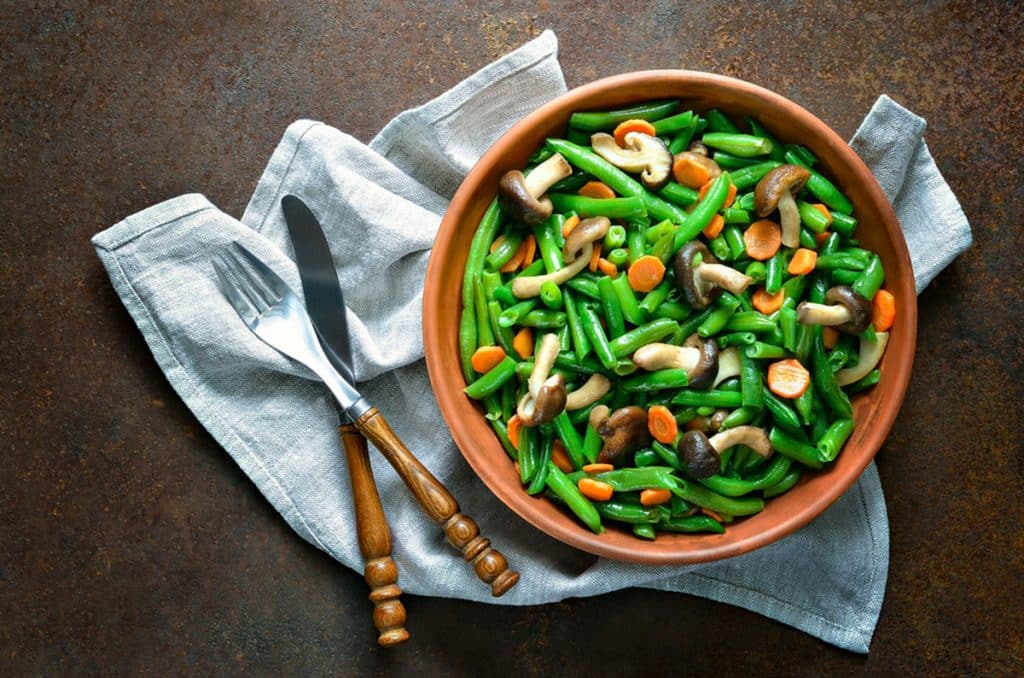
13. Dark green veggies
I’m not talking about kale only.
Dark green veggies like broccoli, Bok choy, spinach, and mustard greens are remarkable foods for healthy skin thanks to the various vitamins they contain.
As you can see below, your diet should consist of different leafy greens. Not just kale.
• Vitamin A is present in kale, spinach, turnip greens, bok choy, lettuce, broccoli
• Pantothenic acid can be obtained from broccoli
• Biotin is found in Swiss chard
• Vitamin C is available in spinach, kale, broccoli, Brussels sprouts, watercress, bell peppers
• Vitamin E is present in broccoli, Brussels sprouts, collard greens, bell peppers, asparagus
P.S. I have absolutely nothing against kale. It’s just that there’s way too much noise around this one veggie. And the truth is that, to achieve optimal health, you’re better off eating a variety of veggies.
14. Kefir
The health of your skin depends on how healthy your gut is. If you suffer from digestive issues (like bloating, gas, heartburn, diarrhea, or constipation), chances are your skin will need some makeover.
And here’s the thing: to treat your skin, you’ll need to address your gut health.
One way to do this could be to include more fermented foods like kefir in your diet. Research indicates that probiotics (healthy bacteria found in fermented foods) can:
• Improve nutrient delivery to the skin.
• Strengthen the gut barrier, making it less vulnerable to pathogen colonization. This, in turn, attenuates intestinal inflammation which often presents in the form of acne, eczema, psoriasis, and dermatitis.
• Boost the skin’s natural flora. The friendly bacteria that live on our skin can delay skin ageing by maintaining hydration and the skin’s pH level.
15. Fermented vegetables
Besides being rich in probiotics, fermented veggies are also a great source of sulfur. Rarely evoked in mainstream nutrition, sulfur is crucial for both skin health and general well-being.
Here’s how sulfur from fermented veggies (animal products, onions, and garlic) can keep your skin healthy:
• To make collagen, the body needs sulfur.
• Sulfur is involved in the production of the antioxidant glutathione. Hence, sulfur can retard skin ageing.
• Adequate glutathione is needed to keep skin inflammation at bay.
Go on a ‘fermented vegetables adventure’. There are SO many different ways to prepare fermented foods. Check out this article to find out what I mean and to ensure that fermented foods will not spell more trouble for you.
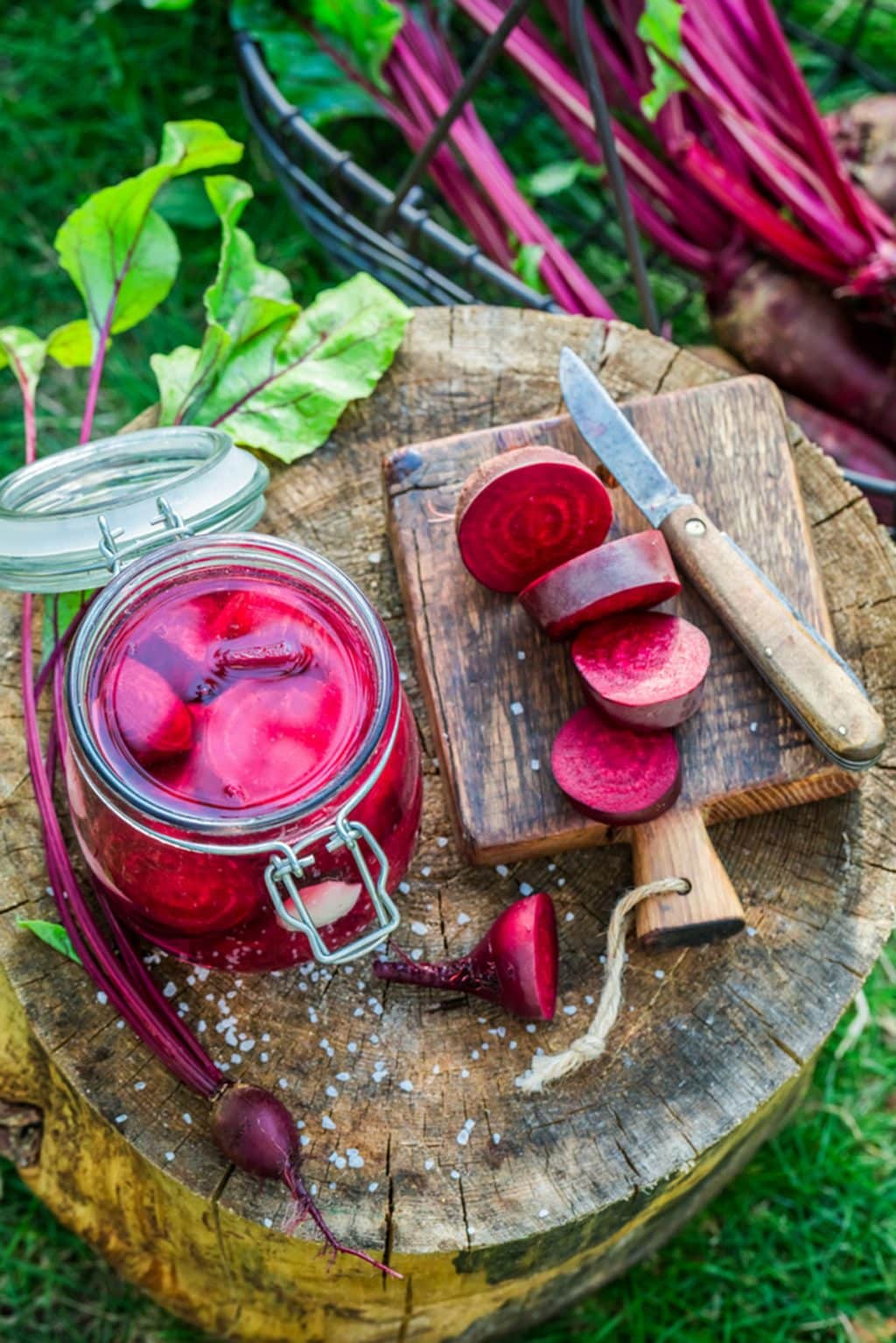
16. Sweet potatoes
Sweet potatoes are rich in the B-complex vitamins biotin and pantothenic acid.
As mentioned earlier, the skin possesses a fatty barrier that shields it against toxins and pollutants while preventing moisture losses. To make this fatty barrier, the body needs biotin.
Not consuming enough dietary biotin can cause the skin to become inflamed and scaly.
Check this article if you feel like trying some decadently healthy sweet potato recipes.
17. Berries
Berries are jam-packed with antioxidants that can slow down skin ageing.
But did you know that these colorful goodies are wonderful sources of the antioxidant vitamin C?
Besides boosting the immune system, vitamin C is essential for the production of healthy collagen.
Moreover, vitamin C reduces inflammation, reduces DNA damage caused by UV radiation while promoting the survival of healthy skin cells.
18. Kiwi
The kiwi should be on any list of foods for healthy skin.
Why?
Well, this fruit is loaded with both vitamins C and E, two vitamins that work in synergy. You see, when vitamin E inactivates a free radical, it is also inactivated and becomes useless. Consuming a diet rich in vitamin C can help reverse this process.
19. Herbs
Parsley, thyme, basil, cilantro and chives do not simply add some serious zing to recipes. They’re also naturally rich in vitamin C which helps preserve our skin’s firm structure.
In their tiny skin-protecting package, herbs pack a ton of different antioxidants that exert various functions. For instance, oregano contains beta-caryophyllin which can reduce inflammation.
And basil is jam-packed with orientin and vicenin, two compounds that can slow down skin ageing by preventing DNA damage.
Plus, the essential oils in the basil leaf possess antibacterial properties and can, thus help keep acne at bay.
20. Bell peppers
Rich in vitamin A, bell peppers can protect the skin against premature skin ageing and inflammation.
Vitamin A possesses antioxidant properties that can quench the damage caused by free radicals. When allowed to accumulate in the skin, free radicals damage the skin by weakening our DNA and collagen. Beyond skin ageing, this can increase the risks of sunburn and skin cancer.
Moreover, vitamin A also helps tighten the skin’s barrier thus making the skin less vulnerable to toxins and pollutants.
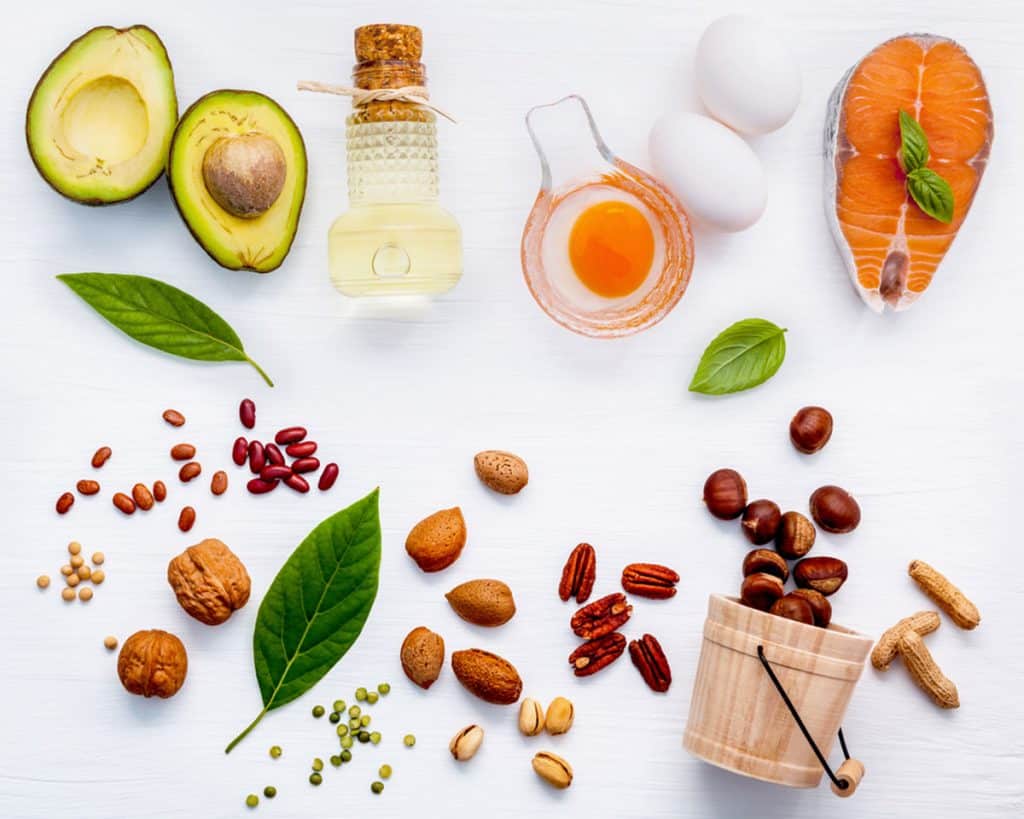
21. Brazil nuts
Good to know: 2 Brazil nuts per day will provide you with 200 micrograms of selenium! This often-forgotten mineral is important for healthy skin since it protects the skin against damage induced by toxins and free radicals.
Moreover, selenium also helps preserve the skin’s elasticity and prevents the skin from becoming rough.
22. Garbanzo beans
These beans are rarely mentioned among foods for healthy skin.
And that’s a shame because garbanzo beans are rich in the mineral silica. Not consuming enough dietary silica could reduce your skin’s elasticity – hello wrinkles!
Silica is involved in the production of hyaluronic acid, a lubricating substance that retains collagen and increases moisture in the skin. As discussed earlier, a dried-out skin will be more vulnerable to bacterial insults – this can favor acne formation.
Can’t tolerate beans? No worries – forget the synthetic form of this trace mineral. You can get all the silica you need in:
- Leeks
- Celery
- Mango
- Green beans
- Strawberries
- Asparagus
- Cucumber
- Rhubarb
21. Pomegranate
This fascinating fruit is often promoted as a great ally for your ticker. But what the media often fails to mention is that it can work wonders for your skin as well.
Besides being a potent nutrient powerhouse, the pomegranate is also rich in ellagic acid, an antioxidant with powerful skin protecting properties.
Research shows that ellagic acid can:
• Considerably slow the growth of skin tumors.
• Reduce inflammation which, in turn, slows down wrinkle formation and skin thickening.
• Block the production of substances that break down collagen in damaged cells. Put simply, this antioxidant helps keep the skin firm and makes wrinkles less visible.
Check out this article for clever ways to eat a pomegranate and how to cut it easily.
23. Dark chocolate
Wondering how chocolate made it on my list of healthy foods for the skin?
Well, it’s rich in flavanols, antioxidant compounds which can improve blood circulation to the skin. In other words, dark chocolate can do wonders for your skin by ensuring that your skin cells will get enough oxygen and nutrients. This improved blood flow will also keep the skin properly hydrated.
Important note: The keyword here is ‘dark’. Meaning that your skin won’t reap the skin protective effects of flavanols if you consume chocolate that is less than 85% dark.
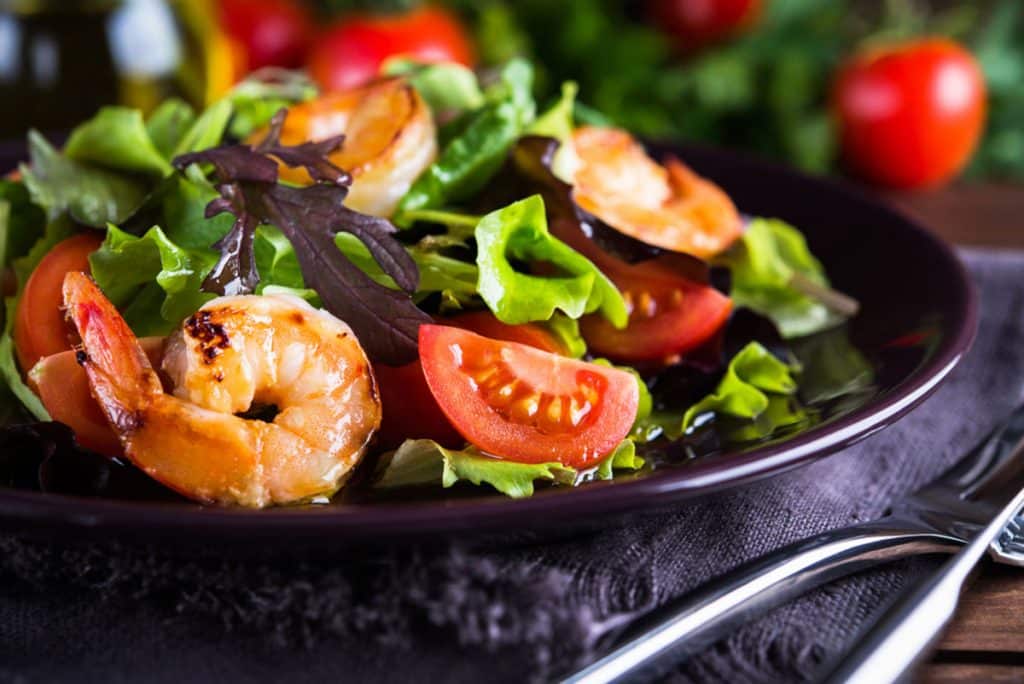
24. Tomatoes
Tomatoes get their ruby red color from the antioxidant lycopene.
Lycopene can be an efficient weapon against the ageing effects of free radicals and UV radiation. Moreover, lycopene can maintain the skin’s health by enhancing communication between cells.
To get the most out of lycopene, you want to either eat cooked tomatoes or add a healthy fat to the tomatoes. In a salad, for instance.
Are you on the autoimmune paleo diet? Then get all the lycopene you need from papaya and pink grapefruits. Gojiberries (a.k.a wolfberry) are nightshades just like tomatoes and are therefore, not allowed on the AIP diet.
25. Red grapes
You probably guessed it. Red grapes are great skin allies thanks to the resveratrol they contain. Dietary resveratrol has been shown to:
- Protect the skin against UV radiation
- Prevent the growth of abnormal skin cells
- Make it easier for the body to produce healthy collagen
26. Chickpeas
Rich in fiber, beans like chickpeas can help regulate blood sugar levels. Korean researchers discovered that this could reduce the appearance of pimples and red spots.
[color-box]Now that you know which foods to eat for healthy skin, let’s move to what drinks can improve your skin’s health.[/color-box]
27. Water
This one is probably not a surprise for you. After all, the body needs water to:
• Maintain the skin’s fatty barrier efficiency.
• Transport nutrients to and carry toxins away from our skin.
• Keep the skin well moisturized – dry skin is more prone to inflammation and ages faster.
28. Green tea
Have you noticed that many cosmetics contain green tea extracts?
That’s because green tea contains epigallocatechin gallate (EGCG), a potent antioxidant. This EGCG has been found to:
• Reduce skin reddening
• Decrease risks of skin cancer
• Protect the skin against sun damage
• Delay the appearance of wrinkles and fine lines by improving the viability of skin fibroblasts, cells that synthesize collagen and maintain the framework of tissues
29. Bone broth
I’m talking about authentic bone broth. Not packaged broths or broths made using bouillon cubes, liquid meat extracts, or artificial broth powders.
Why bone broth?
Because it is THE best source of gelatin, a protein rich in various amino acids that support the skin structure.
Plus, gelatin can help improve digestion by improving levels of stomach acid and the flow of gastric juices.
Remember that if your digestion is sub-optimal, your body will not be able to properly absorb nutrients from the foods you eat. If that’s the case, the few nutrients available will preferentially go to your vital organs and your skin will be (and look) malnourished.
And thanks to the various minerals it contains, bone broth helps boost the liver’s innate detox machinery. A healthy liver increases the chances that you’ll have a healthy skin. Plus, bone broth is also rich in sulfur.
30. Coffee (Unprocessed)
What better way to end a list of healthy foods for the skin than with coffee?
By unprocessed coffee, I mean the non-instant type. With the caffeine.
Studies indicate that consuming at least 3 cups of coffee per day could reduce the risks of skin cancer. That’s because caffeinated coffee is rich in antioxidants that can decrease the cumulative effects of UV exposure.
But here’s the thing: if you have an unhealthy gut, coffee may further irritate your gut. This could show up on your skin as pimples and an uneven tone.
Are you ready to eat your way to fabulous skin? I’d love to hear all about your experience in the comments section below or on Bembu’s facebook page.



